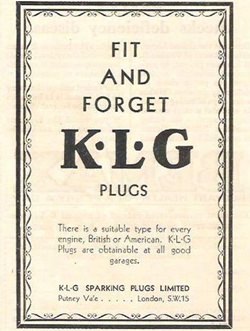Internal combustion engines have been around for many years, and most of them require some way of igniting the petrol/air mixture in the cylinder. The easiest and simplest way is by introducing an electric spark timed to coincide with compressing the fuel mixture and bang! The internal combustion engine fires into life, courtesy of that ignored device called the spark plug.
The spark plug concept actually predates the internal combustion engine itself and the earliest demonstration of the use of an electric spark to ignite a fuel-air mixture was in 1777. In that year, Alessandro Volta loaded a toy pistol with a mixture of marsh gas and air, corked the muzzle, and ignited the charge with a spark from a Leyden jar. Scarcely viable in the dueling situations.
 Original spark plugs
Original spark plugs
Thirty years later in 1807 François Isaac de Rivaz invented a crude hydrogen and oxygen powered internal combustion engine with electric ignition, and in 1808 he fitted it into a working vehicle. It did not work well enough to be considered the new technological advance, however.
Next in line with a spark ignition device was Edmond Berger who invented an early spark plug on February 2, 1839. However, Edmond Berger did not patent his invention, so we will never know if it really worked, as internal combustion engines in 1839 were very experimental in nature as well or perhaps the date was a mistake.
In 1860 Étienne Lenoir used an electric spark plug in his first internal combustion engine and is generally credited with the invention of the spark plug, in a form as we know it today.
As the internal combustion engine began to be reliable enough to be considered as a viable method of power, as opposed to the horse, electric and steam, designers began to improve on the humble spark plug. Early patents for spark plugs included those by Nikola Tesla (in U.S. Patent 609,250 for an ignition timing system, 1898), Frederick Richard Simms (GB 24859/1898, 1898) and Robert Bosch (GB 26907/1898). But only the invention of the first commercially viable high-voltage spark plug as part of a magneto-based ignition system by Robert Bosch’s engineer Gottlob Honold in 1902 made possible the further development of the internal combustion engine. Subsequent manufacturing improvements can also be credited to Albert Champion, the Lodge brothers, sons of Sir Oliver Joseph Lodge, who developed and manufactured their father’s idea and Kenelm Lee Guinness, of the Guinness brewing family, who developed the KLG brand. Of course the brands Champion, Lodge and KLG became well known in the motoring world.




